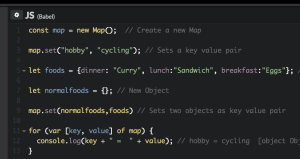
It's tricky to keep your codebase organized as your React project grows. Here are five best-practice tips for organizing your large React app.

It's tricky to keep your codebase organized as your React project grows. Here are five best-practice tips for organizing your large React app.

Learn about key problems related to asynchronous programming in JavaScript and how to make your life easier with promises and async/await.

Learn how JavaScript promises work, how to create and chain them, how promise error handling works, and how to use recent promise methods.

Craig Buckler examines the proposed class fields feature of JavaScript, which aim to deliver simpler constructors with private and static members.

Craig looks at new features in ES2018 (ES9), including asynchronous iteration, Promise.finally(), rest/spread properties and RegEx lookbehind assertions.

M. David Green reviews new features of modern JavaScript, such as classes and arrow functions, looking at when you should and perhaps shouldn't use them.

Craig Buckler reviews the main JavaScript updates introduced with ES2017, and also giving a brief outline of how the updating process works.

James explains the process of JavaScript versioning, covering the history of JavaScript and explaining the process by which yearly releases are organized.

Mark Brown shows how you can use ES modules in the browser today, moving away from module loaders to bundle dependencies into a single ES5 file.

Craig looks at object literals, digging into new features introduced from ES2015 (ES6) that make object handling even easier in modern browsers and Node.js.

Jeff Mott guides you through a step-by-step approach to JavaScript object creation — from object literals to factory functions and ES6 classes.

Samier Saeed walks you through the best way to implement a singleton in JavaScript and examines how that has evolved with the rise of ES6.

Ivan digs into JavaScript performance, from environments, response times, context, parsing, compiling and executing, to bundle sizes and shipping less code.

Ludovico Fischer introduces you to the Fetch API, a new standard that aims to unify fetching across the web and to replace XMLHttpRequest.

Dan Prince demonstrates ten ways you can use native ES6 features (such as arrow functions & collection methods) to replace Lodash in your projects.

Moritz Kröger shows to use ES6 default parameters and property shorthands to help speed up development and write cleaner, clearer and more organized code.

New to JavaScript, or been away for a while? Learning modern JavaScript can be overwhelming. James Kolce takes a look at the main concepts you need to know.

Craig Buckler introduces ES6 modules, showing how they can be used today with the help of a transpiler.

Jeff Mott takes an in-depth look at ES6 classes starting with the basics, then moving on to discuss inheritance, encapsulation, polymorphism and much more.

Byron covers generators and iterators, two JavaScript features introduced in ES6 (ECMAScript 2015) that have changed the way developers write JavaScript.

Craig describes how to use proxies in ES6 to perform meta-programming operations such as intercepting object property inspections and function calls.

Symbols, a new primitive type, are one of the lesser-known features of ES6. Nonetheless, they can come in quite handy, as Nilson Jacques demonstrates.

Aurelio introduces let and const, two new ES6 keywords for defining variables, showing examples of how they work and how they differ from the var keyword.

Aurelio introduces ES6 methods that work with arrays — Array.* and Array.prototype.* — showing examples of them in action and listing available polyfills.

Aurelio introduces the new ES6 methods that work with strings — String.prototype.* — showing examples of them in action and listing available polyfills.

MSDN's Kyle Pennell introduces the new ES6 collections Map, Set, WeakMap, WeakSet, explaining how and when to use these new data collection types.

Aurelio introduces the new and improved ES6 number methods and constants, along with practical examples of how each works, and fallbacks for older browsers.

Camilo Reyes looks at the observer pattern — a handy pattern to use for keeping parts of a page in sync in response to events and the data they provide.

Has JavaScript become overly complicated? In this editorial, Nilson Jacques responds to those who are unhappy with the state of modern web development.

Tim Severien looks at different possibilities for code reuse with ES2015 classes, exploring various ways of implementing multiple inheritance in ES6.